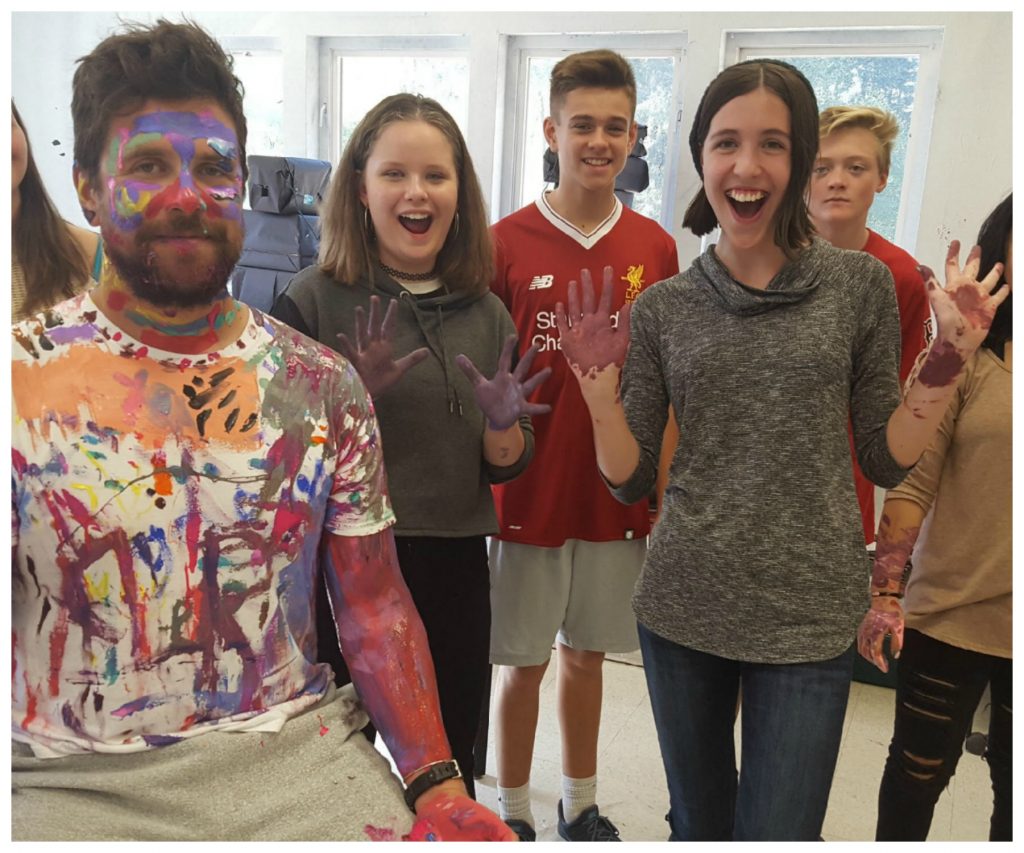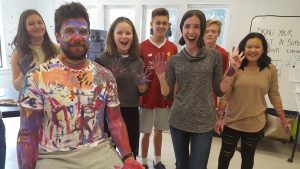Hyla Stories
Interactive Performance Art in 8th Grade

 Each year Hyla 8th grade students transform the art classroom, filling every square inch with installations. Incorporating floor, ceiling, windows and walls, they construct their installations over many months, and then showcase their creations to parents at “Art Night” in the spring. Each installation is focused around a theme, chosen collaboratively by students.
Each year Hyla 8th grade students transform the art classroom, filling every square inch with installations. Incorporating floor, ceiling, windows and walls, they construct their installations over many months, and then showcase their creations to parents at “Art Night” in the spring. Each installation is focused around a theme, chosen collaboratively by students.
Preparations for this year’s installations are well underway. Teacher Kate Lovejoy began with a ‘mini-installation’ project to enable students to “experiment with the concept of using art to explore a question without definitively answering it, and also to see how something like a monochromatic color scheme can lend cohesion to an otherwise chaotic or non-amalgamous piece. Both of these are important factors in preparing for the eighth grade installation.”
Next she introduced interactive performance art. “Performance art is an often overlooked element of art education,” says Kate, “because it exists at the boundary of what people are willing to accept as art and not art.” She began by showing students several iconic performance art pieces by Yoko Ono, Andy Warhol and Marina Abramovic, and also this TED talk with Glenn Lowry. Right away students were up against the first truth of performance art: being a spectator will take you only so far.
Kate then provided students with elements to engage in their own performance piece. She told them they would have a canvas, paint, and an interaction. When they came into the art room they found paint palettes marked with experiences like divorce, getting lost, falling in love, and finding my way home. They found paint bottles in every color marked with different emotions. They also found a person in the art room – for one group it was drama teacher Chris Soldevilla; for the other it was PE teacher Cooper Rooks. To begin the piece, students chose a palette with a scenario, added their emotion colors, and began to paint their human “canvas.”
The challenge of performance art is that it requires you to acknowledge what is awkward (like watching Andy Warhol eat a cheeseburger), or uncomfortable (like watching Yoko Ono scream loudly in an otherwise quiet museum), and feel your way through the experience. Working with the movements of their human canvas – reading, standing, walking, making eye contact – students adjusted their interactions. With each shift, says Kate, “they realize, ‘ok, now I’m involved in a different way.”
The project ended with a discussion about their experiences as students talked about the different choices they made and their comfort levels. One student shared, “I felt like a ghost” while others expressed concern over not knowing what Chris and Cooper were feeling. Kate explains that “every experience evokes a response that is worth examining. To experience performance art is to come at your own assumptions from another angle, and to challenge them. The whole idea of disruptive art is that it asks people to look at their discomfort and it breaks down previously agreed upon norms. As artists, we can’t ask our audience to be vulnerable and uncomfortable without an element of that in ourselves.”
This work prepares students for the choices, elements, and process they will experience with their installations. This year students chose a question for their theme: “Am I Dreaming?” We look forward to the individual expression and also group cohesion on Art Night!
